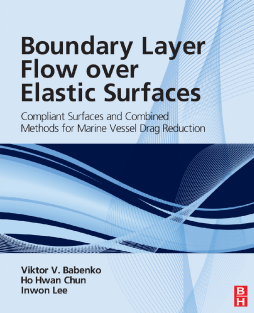
Additional Information
Book Details
Abstract
While other methods of drag reduction are well-known in marine R&D and ship design environments worldwide, compliant coating drag reduction remains less well-known and poorly understood. This important book presents cutting-edge techniques and findings from research sources not generally accessible by Western researchers and engineers, aiding the application and further development of this potentially important technology.
Beginning with an introduction to drag reduction that places the authors’ work on elastic surfaces and combined techniques in context, the book moves on to provide a comprehensive study of drag reduction through elastic coating with both flow and material properties considered. Coverage includes:
- Experimental findings around coherent vortical structures (CVS) in turbulent boundary layers and methods of controlling them
- Static and dynamic mechanical characteristics of elastic composite coatings, as well as new techniques and devices developed for their measurement
- Combined methods of flow control and drag reduction, including the effect of injection of polymer solutions, elastic coatings and generated longitudinal vortical structures on hydrodynamic resistance
Intended as a reference for senior engineers and researchers concerned with the drag reduction and the dynamics of turbulent boundary layer flows, Boundary Layer Flow over Elastic Surfaces provides a unique source of information on compliant surface drag reduction and the experimental techniques around it that have shown measurable and repeatable improvements over recent years.
This compilation of research findings and new techniques developed for measurement will aid R&D engineers, naval architects and senior designers in their quest to achieve drag reductions that will deliver significant efficiency savings.
- Unique source of information on compliant surface drag reduction—an important area of technology with practical application to ships—from otherwise inaccessible research studies
- Updates the knowledge-base on boundary layer flow and surface friction reduction, critical topics in the global quest for increased ship efficiency and fuel economy
- Reveals new techniques and devices developed for measurement and provides a comprehensive study of drag reduction through elastic coating with both flow and material properties covered
"The book provides and in-depth discussion on boundary layer flow, quoting over 500 references to illustrate how our understanding of the various factors involved has grown. It will be of interest to researchers, naval architects and designers engaged in achieving drag reduction and thus the increased efficiency of propulsion which is needed to reduce harmful emissions."--Ship and Boat International, January/February 2013
